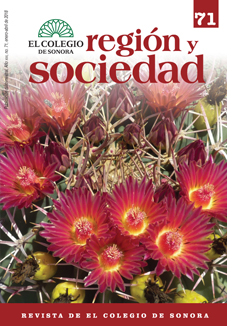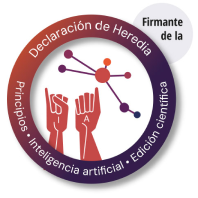 |
 |
 |
 |
 |
 |
 |
 |
 |
 |
 |
 |
Resumen
El objetivo de este trabajo es exponer la situación de la inmigración indocumentada en 2010, ante la promulgación de la ley SB1070 en Arizona. El tema se aborda a partir del manejo que se le dio a la legislación en medios sociales e internet. También se muestra la situación que padecieron después los migrantes en la frontera mexicoamericana. Los resultados surgen de la comparación de los recursos mnemónicos de los discursos y las acciones vinculados con la “solución final”. En el debate en torno a la SB1070, el destino de los judíos en la Alemania nazi adquirió características de un “sitio de la memoria” bivalente; sirvió tanto a los promotores como a los detractores de la medida, para competir por la memoria colectiva a favor de su causa. Con objetos reminiscentes se demuestra la facilidad con que la memoria se utiliza políticamente, y se adapta a casos que nada tienen que ver con el evento que rememoran.
Referencias
Allen, Sylvia. 2010. AZ state senator Sylvia Allen responds to SB1070. http://patricksperry.com/2010/05/04/az-state-senator-sylvia-allen-responds-to-sb1070/ (17 de febrero de 2016).
Amuedo-Dorantes, Catalina y Fernando Lozano. 2014. On the effectiveness of SB1070 in Arizona. Economic Inquiry 53 (1): 335-351.
Archibold, C. Randal. 2010a. U.S.’s toughest immigration law is signed in Arizona. http://www.nytimes.com/2010/04/24/us/politics/24immig.html?ref=us (2 de febrero de 2016).
Archibold, C. Randal. 2010b. On border violence, truth pales compared to ideas.http://www.nytimes.com/2010/06/20/us/20crime.html (7 de diciembre de 2015).
Arizona SB1070. 2010. Forty-nine Legislature, second regular session. http://www.azleg.gov/legtext/49leg/2r/bills/sb1070s.pdf (31 de enero de 2016).
Arpaio, Joe y Len Sherman. 2008. Joe’s law: America’s toughest sheriff takes on illegal immigration, drugs and everything else that threatens America. Nueva York: AMACOM.
Arpaio, Joe y Len Sherman. 1996. Sheriff Joe Arpaio. America’s toughest sheriff. Phoenix: Summit Publishing Group.
Associated Press. 2010. 532 Guard troops now at Arizona border. http://www.armytimes.com/news/2010/10/ap-532-guard-troops-at-arizona-border-100110/ (23 de marzo de 2015).
Ball, Karyn. 2008. Disciplining the Holocaust. Albany: State University of New York Press.
Barnes, Robert. 2012. Supreme Court rejects much of Arizona Immigration Law. https://www.washingtonpost.com/politics/supreme-court-rules-on-arizona-immigration-law/2012/06/25/gJQA0Nrm1V_story.html (21 de febrero de 2016).
Bartov, Omer. 2003. Germany’s war and the Holocaust. Disputed histories. Ithaca, Londres: Cornell University Press.
Berger, Ronald J. 2013. Holocaust, religion and the politics of collective memory: beyond sociology. New Brunswick/Londres: Transaction Publishers.
Birn, Ruth B. 1998. Revisiting the Holocaust. En A nation on trial. Goldhagen thesis and historical truth, de Norman G. Finkelstein y Ruth B. Birn, 110-189. Nueva York: Henry Holt.
Blumoff, Theodore Y. 1994-1995. The Holocaust and public discourse. Journal of Law and Religion 2 (11): 591-636.
BMI. 2013. A continued humanitarian crisis at the border: undocumented border crosser deaths recorded by the Pima County Office of the Medical Examiner, 1990-2012. Tucson: University of Arizona.
Bonifas, Aimé. 1987. Prisoner 20-801: a French national in the nazi labor camps. Carbondale: Southern Illinois University Press.
Brunet-Jailly, Emmanuel (editor). 2007. Borderlands. Comparing border security in North America and Europe. Ottawa: University of Ottawa Press.
Catholic World News. 2010. Cardinal Mahony compares Arizona immigration bill to nazism, communism. http://www.catholicculture.org/news/headlines/index.cfm?storyid=6079 (18 de enero de 2015).
Cesarani, David. 2005. After Eichmann. Collective memory and the Holocaust since 1961. Nueva York: Routledge.
CNN. 2011. EU se prepara ante una posible alianza entre Al-Qaeda y “Los Zetas”. http://mexico.cnn.com/mundo/2011/02/10/eu-se-prepara-ante-la-posible-alianza-de-al-qaeda-y-los-zetas (23 de febrero de 2011).
Cole, Tim. 1999. Selling the Holocaust. From Auschwitz to Schindler: how history is bought, packaged, and sold. Nueva York: Routledge.
Confino, Alon. 2015. The Holocaust as a symbolic manual: the French Revolution, the Holocaust, and global memories. En Marking evil. Holocaust memory in the global age, editado por Amos Goldberg y Haim Hazan, 56-70. Nueva York: Berghahn/The Van Leer Jerusalem Institute.
El Imparcial. 2011. Aumentan muertes de migrantes. 7 de febrero.
Espino, Rodolfo. 2013. Immigration politicking and the perception of latino voters in Arizona. En Latino politics and Arizona Immigration Law SB 1070, editado por Lisa Magaña y Erick Lee, 27-41. Nueva York: Springer.
Etienne, Julián. 2010. SB 1070: Expulsar a los bárbaros. Letras Libres 138: 106-107.
Eyerman, Ron. 2004. The past in the present: culture and transmition of memory. Acta Sociológica 17 (2): 159-169.
Fackler, Guido. 2001. Lied and gesang im KZ. En Lied und populäre Kultur/song and popular culture. En Jahrbuch des Deutschen Volksliedarchivs Freiburg, editado por Max Matter y Nils Grosch, 141-189. Münster: Waxmann.
Finkelstein, Norman G. 2000. The Holocaust industry. Reflections on the exploitation of Jewish suffering. Nueva York: Verso.
Finkelstein, Norman G. y Betinna Ruth Birn. 1998. A nation on trial. Goldhagen thesis and historical truth. Nueva York: Henry Holt.
Fox Nation. 2010. Phoenix Suns GM compares AZ law to nazi Germany. http://nation.foxnews.com/arizona-immigration-law/2010/05/07/phoenix-suns-gm-compares-az-law-nazi-germany (2 de enero de 2015).
Frey, John Carlos. 2010. National Geographic Channel profits from humanitarian crisis. http://www.huffingtonpost.com/john-carlos-frey/national-geographic-chann_b_428624.html (5 de noviembre de 2012).
Frielander, Saul (editor). 1992. Probing the limits of representation. Nazism and the “final solution”. Cambridge: Harvard University Press.
Garcia, Ann. 2010. Fact sheet: setting the record straight on border crime. Border states are safe today and only getting safer. http://www.americanprogress.org/issues/2010/06/pdf/border_crime.pdf (10 de febrero de 2016).
Gerson, Judith M. y Diana L. Wolf (editoras). 2007. Sociology confronts the Holocaust. Memories and identituies in Jewish diasporas. Durham/Londres: Duke University Press.
Gesternfeld, Manfred. 2009. The abuse of Holocaust memory: distortions and responses. Jerusalén: Jerusalem Center for Public Affairs/Institute for Global Jewish Affairs.
Glasberg, David. 1996. Public history and the study of memory. The Public Historian (18): 7-23.
Gorman, Anna y Nicholas Ricardi. 2010. Calls to boycott Arizona grow over new immigration law.
http://articles.latimes.com/2010/apr/28/local/la-me-0428-arizona-boycott-20100428 (14 de enero de 2016).
Harkov, Lahav. ADL: stop Arizona-Holocaust analogies.
http://www.jpost.com/Jewish-World/Jewish-News/ADL-Stop-Arizona-Holocaust-analogies (10 de febrero de 2016).
Harris, Craig, Alia Beard Rau y Glen Creno. 2010. Arizona governor signs immigration law; foes promise fight.
http://www.azcentral.com/news/articles/2010/04/23/20100423arizona-immigration-law-passed.html (3 de febrero de 2016).
Hesse, Klaus, Peter Steinbach, Kay Kufeke, Andrej Angrick, Andreas Sander, Reinhard Rürup y Pamela Ewe Selwyn. 2010. Topographie of terror. Gestapo, SS and reich security main office on Wilhelm- and Prinz-Albrecht-Strasse: a documentation. Berlín: Stiftung Topographie des Terrors.
Holtschneider, K. Hannah. 2011. The Holocaust and representations of jews: history and identity in the museum. Nueva York: Routledge.
Humane Borders. 2010. 1999-2009 Recorded migrant deaths and humane borders water stations. http://tucson.com/news/local/border/border-bolet-n-mapping-the-deaths/article_86b5a234-b083-11df-97a8-001cc4c002e0.html (14 de agosto de 2017).
Hunt, Kasie. 2010. Dem: Ariz. law like “nazi Germany”.
http://www.politico.com/story/2010/04/dem-ariz-law-like-nazi-germany-036365 (21 de enero de 2016).
Jones, Reece. 2014. Border Wars: narratives and images of the US-Mexico border on TV. En Placing the bord in everyday life, coordinado por Reece Jones y Corey Johnson, 185-203. Farnham: Ashgate.
Kallmann-Museum. 2002. Landpartie. Museen rund um München. Munich: Landpartie.
Keyes, Charles F. y Shigeharu Tanabe (editores). 2002. Cultural crisis and social memory: modernity and identity in Thailand and Laos. Nueva York: Routledge.
Knost, Paul E. 2010. Arizona and nazi Germany: are there similarities? http://www.examiner.com/article/arizona-and-nazi-germany-are-there-similarities (28 de enero de 2016).
Krauze, Enrique. 2004. Huntington: el falso profeta. Letras Libres 64: 24-26.
Lemons, Stephen. 2010. Joe Arpaio: tent city a ‘concentration camp’. http://www.phoenixnewtimes.com/blogs/joe-arpaio-tent-city-a-concentration-camp-6500984 (3 de febrero de 2016).
Lemons, Stephen. 2009. Joe Arpaio goes medieval, while Barack Obama’s America is a million miles away.
http://www.phoenixnewtimes.com/blogs/joe-arpaio-goes-medieval-while-barack-obamas-america-is-a-million-miles-away-6500772 (8 de febrero de 2016).
Levy, Daniel y Natan Sznaider. 2006. The Holocaust and memory in the global age. Filadelfia: Temple University.
Lowenthal, David. 1975. Past time, present place: landscape and memory. The Geographical Review LXV (1): 1-36.
Magaña, Lisa. 2016. Comparing and contrasting the rationales for SB1070 and HB 56: a short analysis. Journal of America Ethnic History 3 (35): 82-86.
Magaña, Lisa y Erick Lee (editores). 2013. Latino politics and Arizona Immigration Law SB1070. Nueva York: Springer.
Margalit, Avishai y Gabriel Motzkin. 1996. The uniqueness of Holocaust. Philosophy & Public Affaires 25 (1): 65-83.
Nájar, Alberto. 2010. 2010, el año más violento para México.
http://www.bbc.com/mundo/noticias/2010/12/101223_mexico_violencia_2010_en.shtml (4 de julio de 2015).
Naumann, Klaus. 1998. Auschwitz im Gedächtnisraum der Presse 1995. En Das Gedächtnis der Dinge. KZ-Relikte und KZ-Denkmäler (1945-1995), editora Detleff Hoffmann, 324-328. Francfurt am Mainz: Campus.
Nora, Pierre. 1992. Les lieux de mémoire. París: Gallimard.
Novik, Peter. 2015. The Holocaust is not –and is not likely to become- a global memory. En Marking evil. Holocaust memory in the global age, editado por Amos Goldberg y Haim Hazan, 46-54. Nueva York: Berghahn / The Van Leer Jerusalem Institute.
Nowicki, Dan. 2010. Arizona immigration law ripples through history, U.S. politics.
http://archive.azcentral.com/arizonarepublic/news/articles/20100725immigration-law-history-politics.html (7 de febrero de 2016).
Orozco, Richard A. y Francesca López. 2015. Impacts of Arizona’s SB1070 on Mexican American students’ stress, school attachment, and grades. Education Policy Analysis Archives 23 (42): 1-26.
Prager, Brad. 2015. After the fact. The Holocaust in twenty-first century documentary film. Nueva York / Londres: Bloomsbury.
Pfeifer, Hans. 2015. “Willkommen” im Nazi Dorf”, Deutsche Welle. http://www.dw.com/de/willkommen-im-nazi-dorf/a-18682416 (13 de febrero de 2016).
Rasmussen Reports. 2010. Arizona voters favor welcoming immigration law policy, 64% support new immigration law. http://www.rasmussenreports.com/public_content/politics/general_state_surveys/arizona/arizona_voters_favor_welcoming_immigration_policy_64_support_new_immigration_law (4 de febrero de 2016).
Riedel, Dirk. 2006. “Arbeit macht Frei”. Leitsprüche und Metaphern aus der Welt der Konzentrationslager. En Realität-Methapher-Symbol. Ausanandersetzung mit der Konzentrationslager, editado por Benz Wolfgang y Barbara Distel (2) 11-29. Dachau: Dachauer Hefte. Studien und Dokumente zur Geschichte der nationalsozialistischen Konzentrationslager.
Robbins, Ted. 2008. The man behind Arizona’s toughest immigrant law. http://www.npr.org/templates/story/story.php?storyId=88125098 (4 de enero de 2016).
Santa Ana, Otto y Celeste González de Bustamante (editores). 2012. Arizona firestorm. Global immigration realities, national media, and provincial politics. Nueva York: Rowmon & Littlefield Publisher.
Schröder, Nicole. 2004. Space and places in motion: spatial concepts in contemporary American literature. Tübingen: Gunter Narr.
Shahabazi, Rudabeh. 2010. FBI report on crime in border states shows surprising statistics. http://www.abc15.com/dpp/news/state/fbi-report-on-crime-in-border-states-shows-surprising-statistics (4 de febrero de 2016).
Sierp, Aline. 2014. History, memory, and trans-European identity. Nueva York/Londres: Routledge.
Sisk, Richard y Erin Einhorn. 2010. Sharpton, other activist compare Arizona immigration law to aparheid, nazi Germany and Jim Crow.
http://www.nydailynews.com/new-york/sharpton-activists-compare-arizona-immigration-law-apartheid-nazi-germany-jim-crow-article-1.167288 (7 de febrero de 2016).
Stewart, Scott. 2010. Mexico and the cartels war in 2010. https://www.stratfor.com/weekly/20101215-mexico-and-cartel-wars-2010 (28 de octubre de 2011).
Stier, Oren B. 2003. Committed to memory. Cultural mediations of the Holocaust. Amherst/Boston: University of Massachusetts Press.
Torre Cantalapiedra, Eduardo. 2016. Explaining state and local anti-immigrant policies in the United States: the case of Arizona’s SB1070. Migraciones Internacionales 8 (3): 37-63.
UPI. 2010. Poll: most support Arizona immigration. http://www.upi.com/Top_News/US/2010/04/29/Poll-Most-support-Arizona-immigration-law/UPI-55921272544207/ (23 de enero de 2015).
Wacquant, Loïc. 2009. Punishing the poor: the neoliberal government of social insecurity. Durham/Londres: Duke University Press.
Wang, Diana. 2007. Hijos de la guerra. La segunda generación de sobrevivientes de la Shoá. Buenos Aires: Marea.
Wendel, C. Damien. 2012. Constructing and deconstructing ‘border wars’. Tesis de maestría en artes, San Jose State University.
Wiedmer, Caroline A. 1999. The claims of memory: representations of the Holocaust in contemporary Germany and France. Ithaca/Londres: Cornell University Press.

Esta obra está bajo una licencia internacional Creative Commons Atribución-NoComercial 4.0.
Derechos de autor 2017 Aaron Grageda Bustamante







